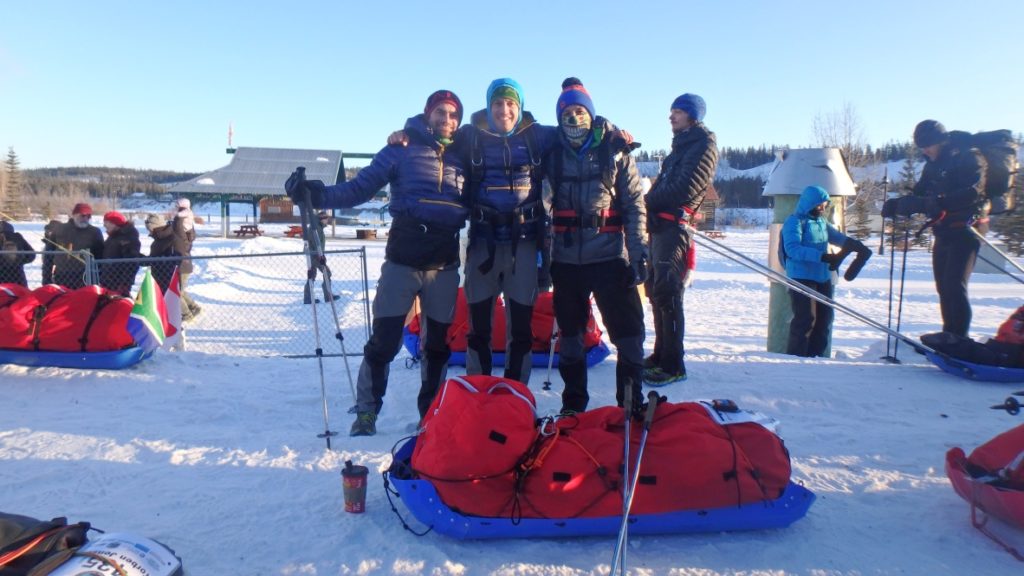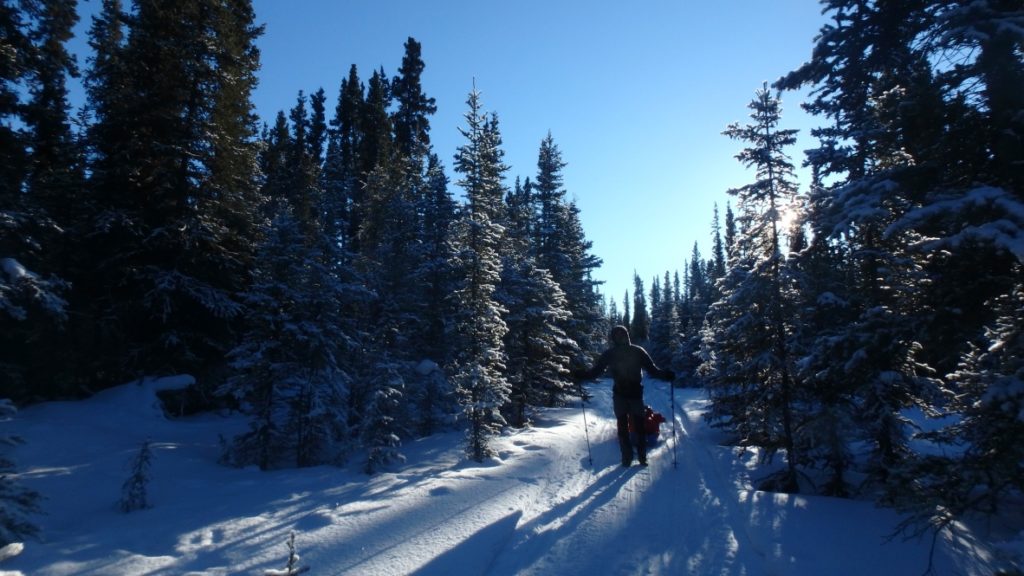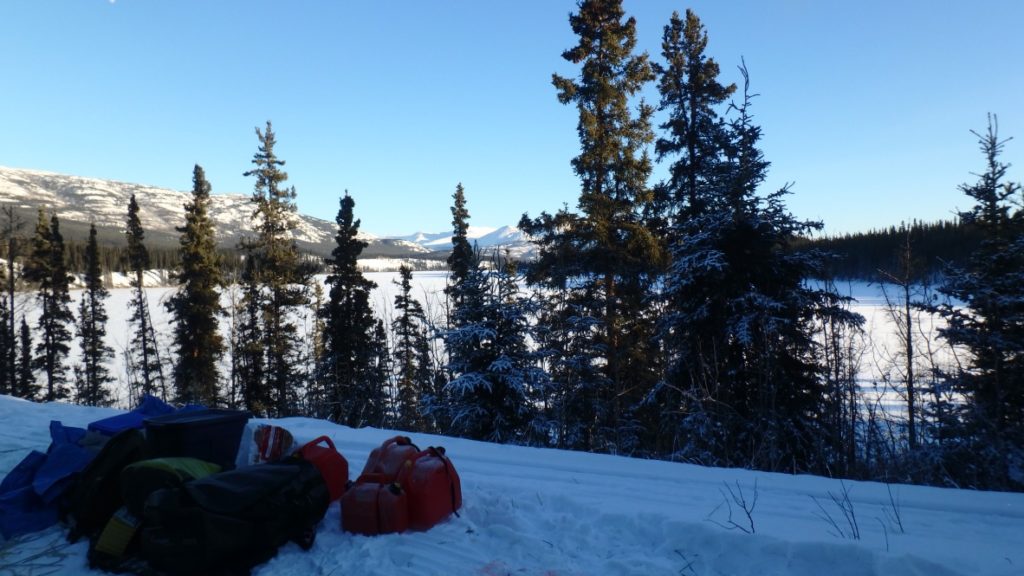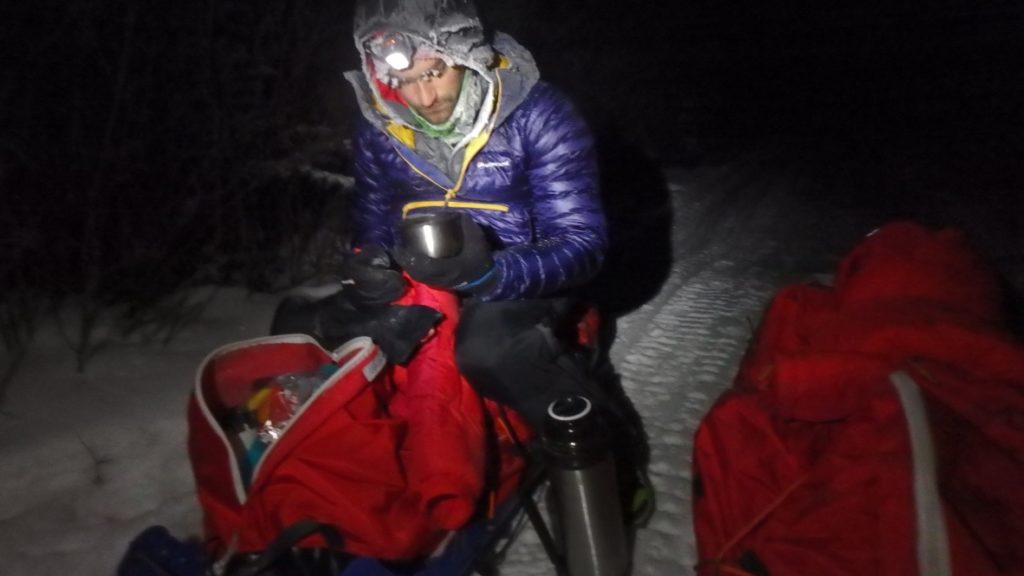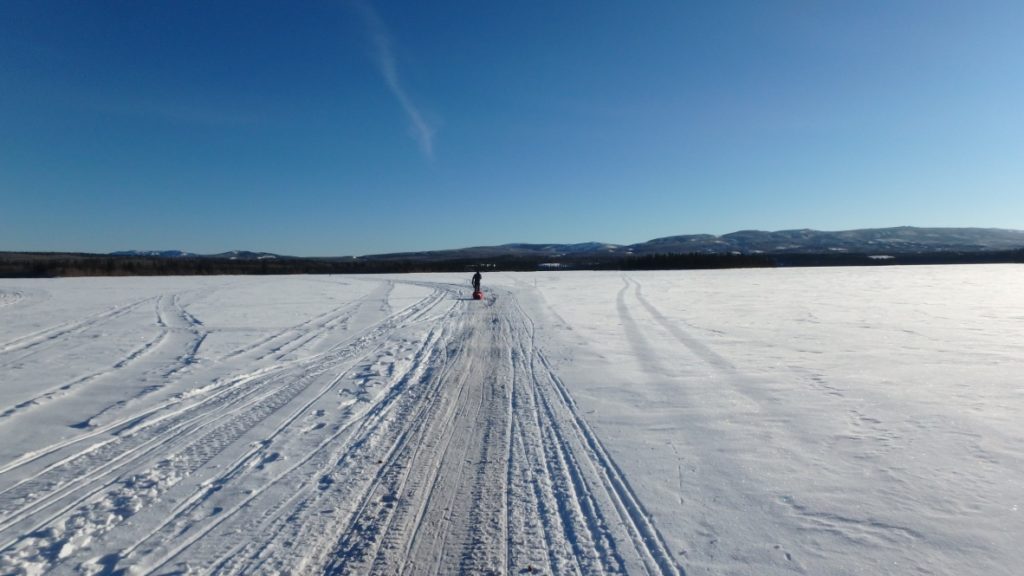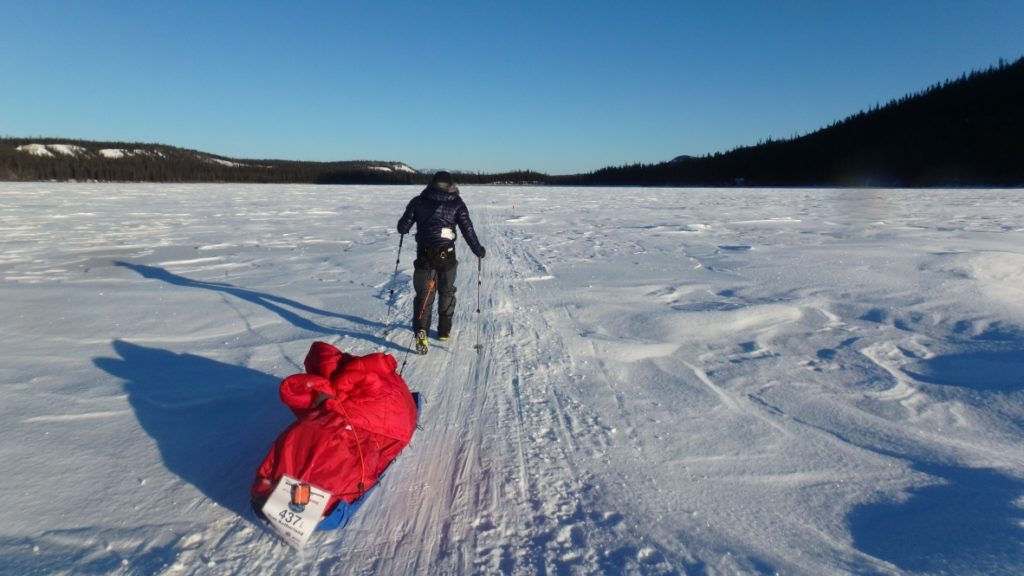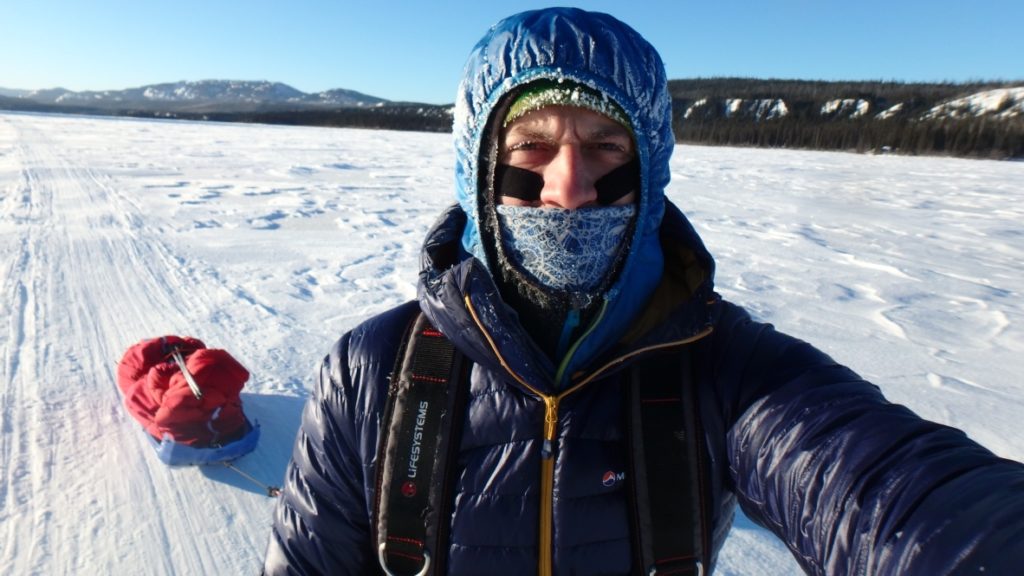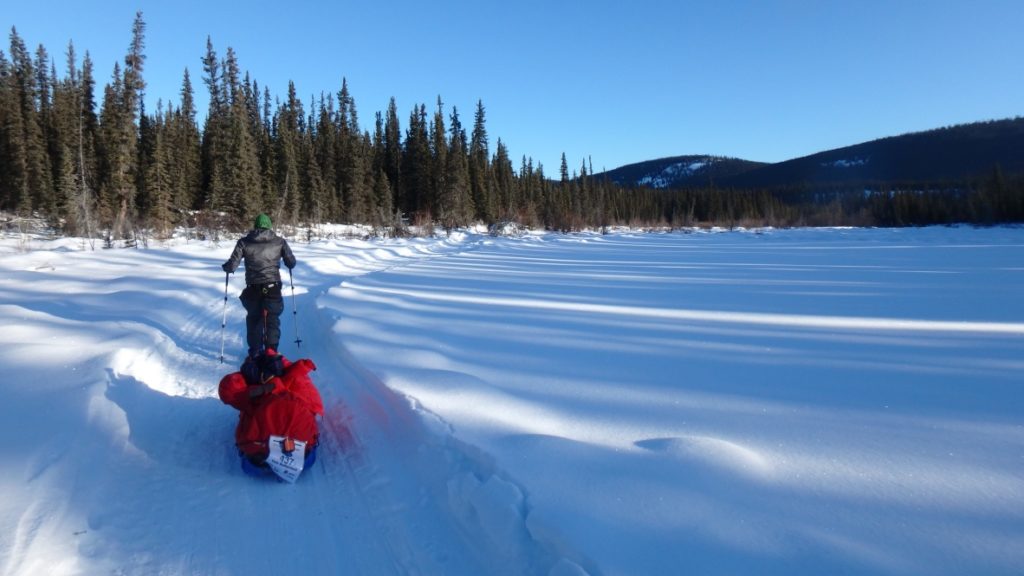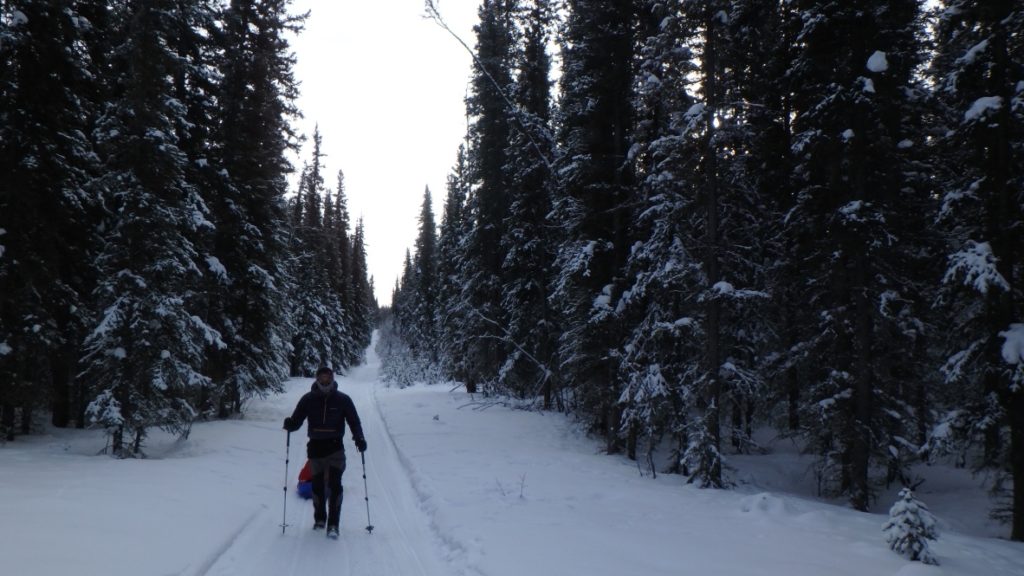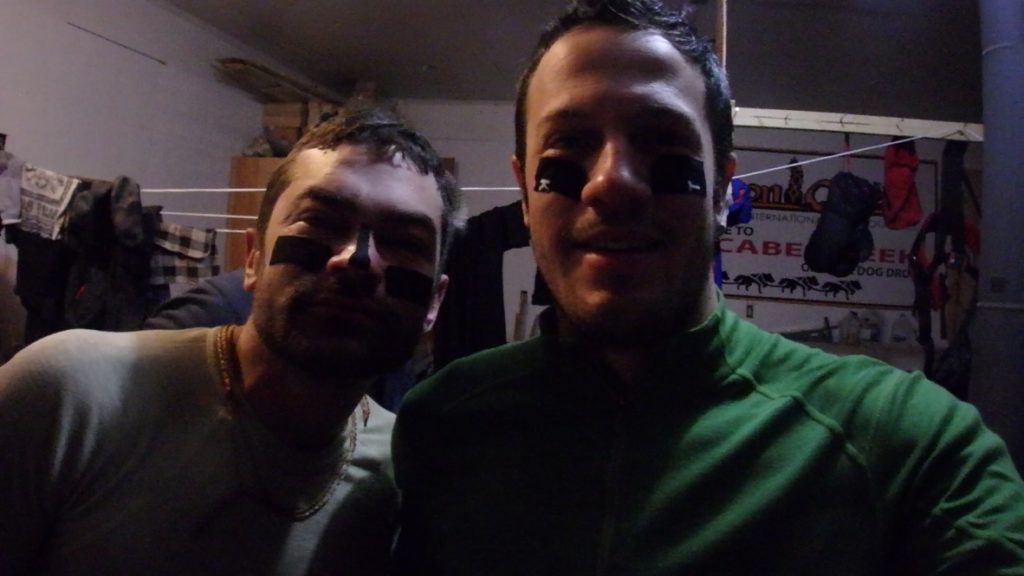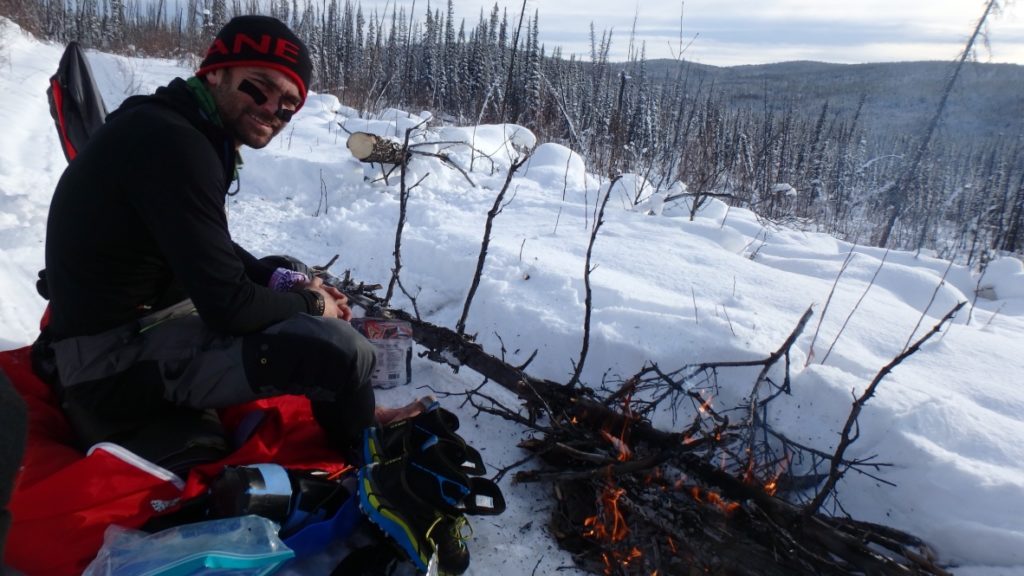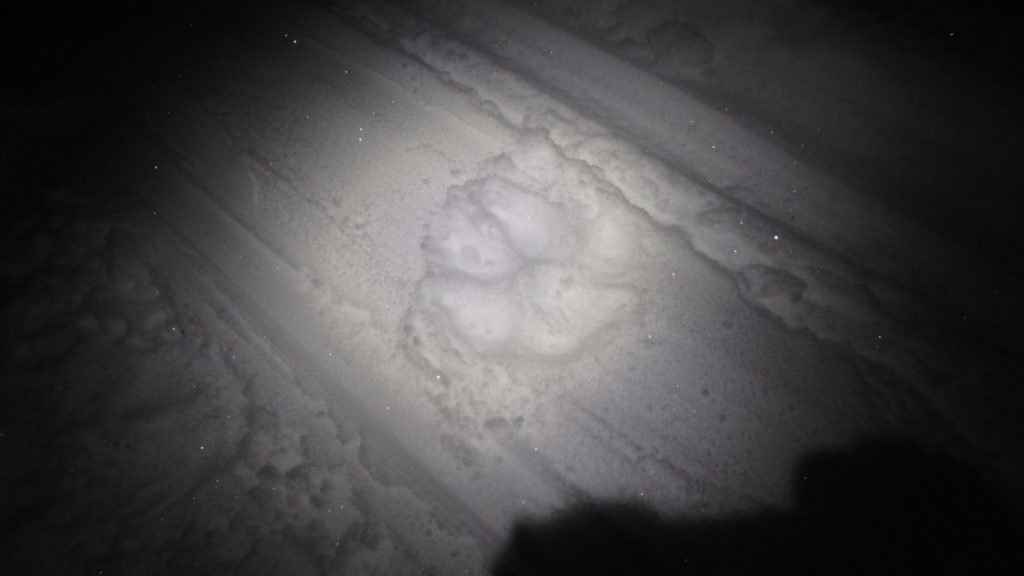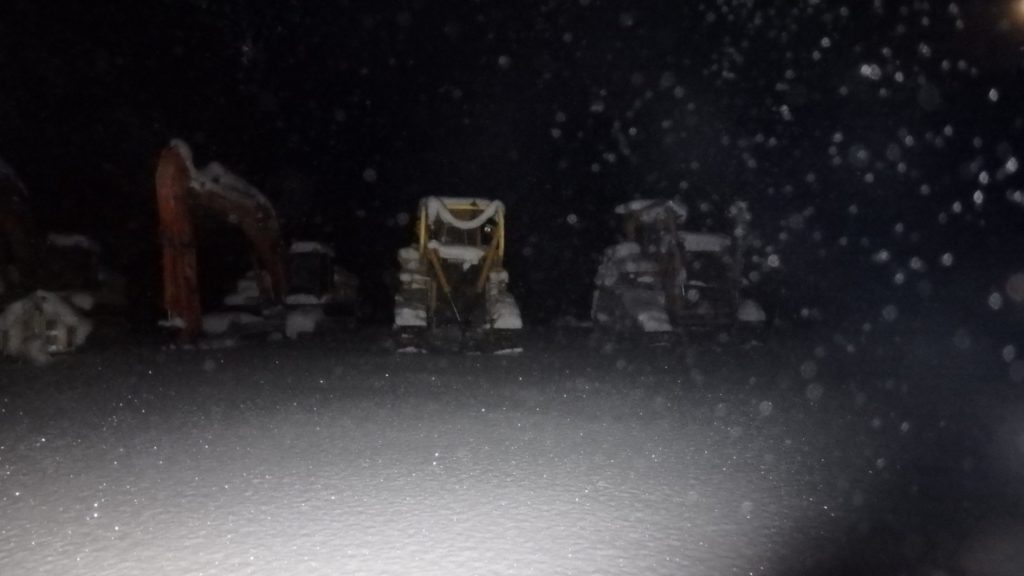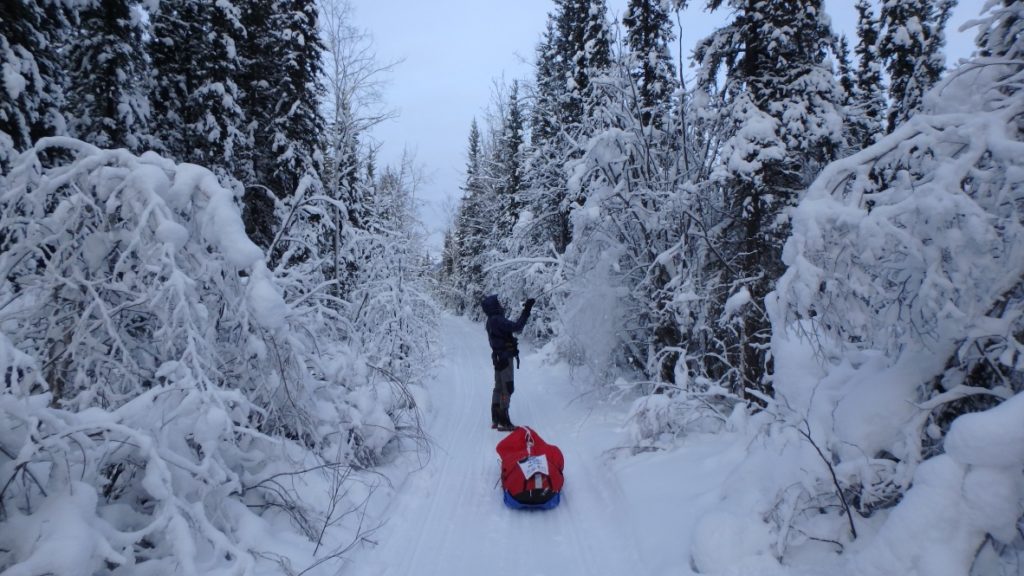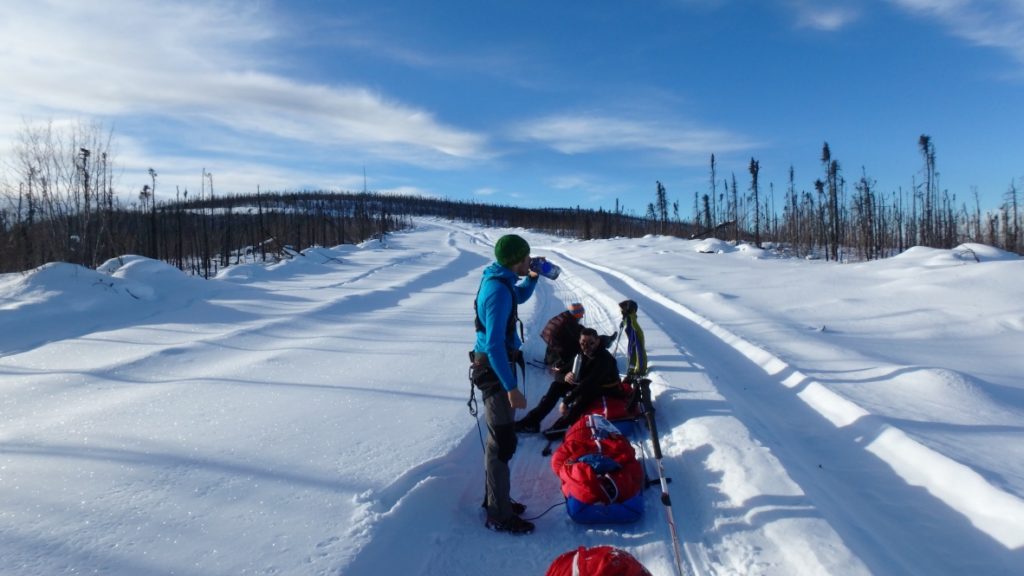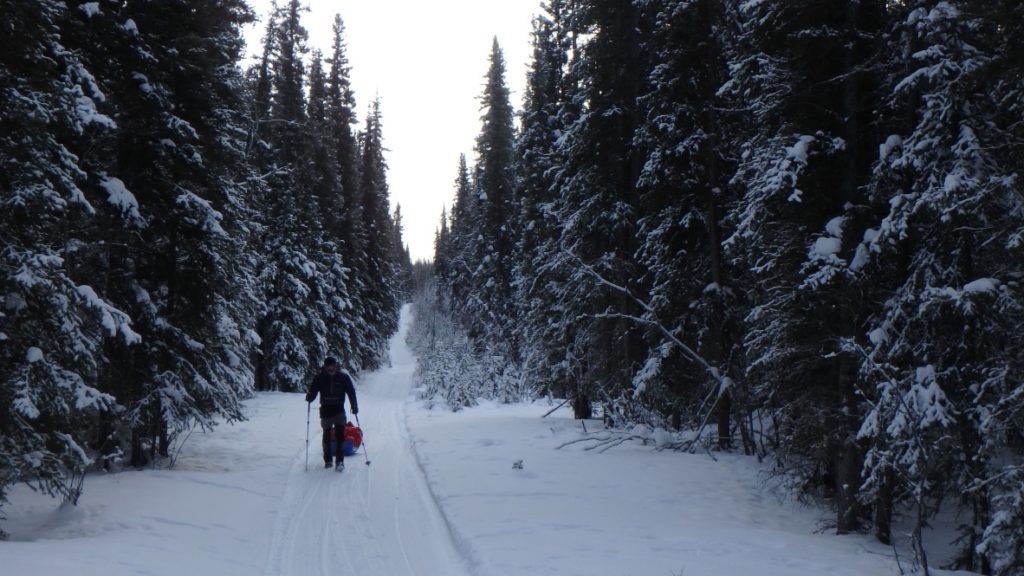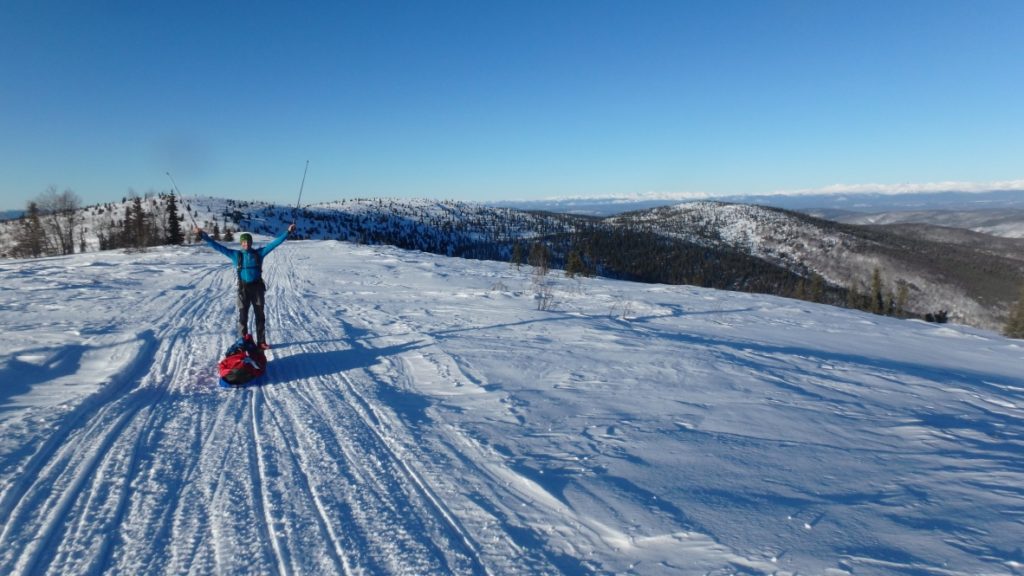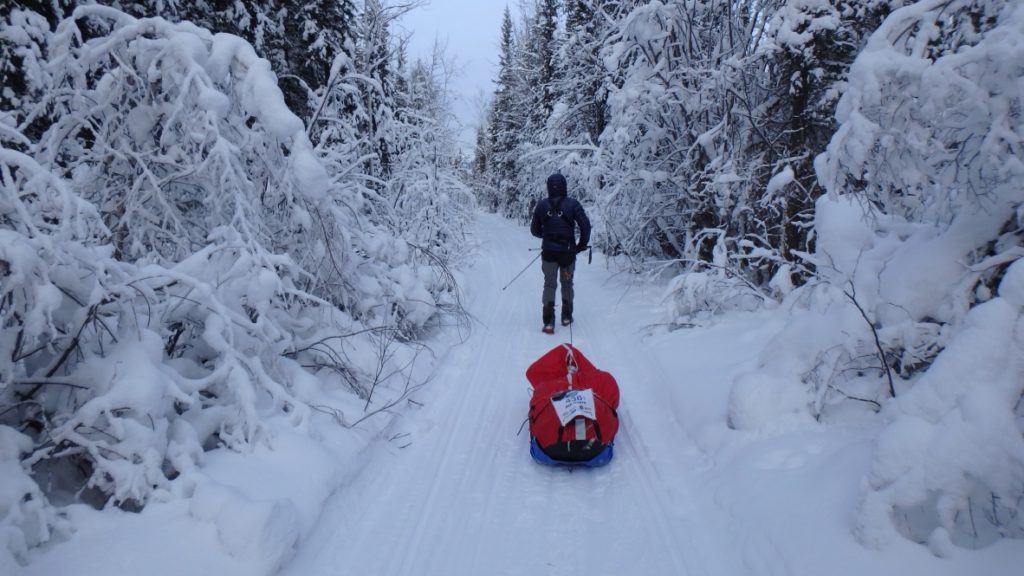
After 12 days 12 hours and 6 minutes and having walked for 436 miles, I unclipped my sled harness, looked up at the sky and breathed a huge sigh of relief – we had done it. The following morning I hobbled into the hotel lobby and bumped into Jessie, another racer I knew who had previous asked me about Everest during in the week. She wanted to ask just one more question about Everest. Sure, I said, uncertain of what she was going to ask me. “Which is harder, climbing Everest or finishing the YAU Arctic Ultra?”
Four years previously, in 2013, I had the opportunity to climb Mount Everest. After many weeks of acclimatising to the extreme altitude, Jabu Sherpa and I successful stood on the top together at 02:50am on 19th May. It’s really difficult to describe the emotions at that point, but it was felt truly incredible to be on the summit of the highest mountain in the world. It was a crystal-clear night and the 360° views across the star-lit Himalayas were staggering – we had the whole mountain to ourselves and the whole world in front of us.
Comparing the world’s hardest and coldest ultra-race to the highest mountain in the world is difficult because they are very different disciplines. The risks are different, the format is different, the context is different, but when you strip them back, the basics are very similar. They both require not only huge amounts of physical fitness and endurance, but also the mental strength and tenacity rarely needed in everyday life.
The YAU is dubbed as the world’s coldest and hardest ultra-race. It takes place each year in February covering a variety of distances (26, 100, 300, 430 miles) across the vast frozen expanse of the Canadian wilderness. The terrain constantly changes between ancient pine forests, vast open lakes, beautiful winding frozen rivers and rolling mountains. Aside from being superbly organised, it offers racers the chance to really test their ability to survive in one of the harshest environment in the world. From start to finish you are outside and exposed to the wilderness. You carry, or more accurately pull, everything you need to survive for the whole race. You run, walk, stop, sleep whenever you choose or need too and the clock never stops ticking.
Every racer has a SPOT tracker which means everyone can see where you are the whole time. These devices also have a help button if you wish to scratch from the race and an SOS button should you be in an emergency life-threatening situation. So, even though you could go 24 hours without seeing another human being, you are only one button away from a Skidoo driver coming into pick you up, even though they may take a few hours.
Everest, by comparison, is the highest mountain in the world, situated in the heart of the biggest mountain range in the world – the Himalayas. It is a vertical, technical challenge as opposed to a linear, endurance one. Climbers from around the world attempt to reach the summit during the spring season in April and May, with only few people trying outside of this period. During an expedition to Everest your time is spent climbing and traveling on glaciers, steep ice faces, rocky scrambles and exposed snowy ridges. It requires a good level of technical mountaineering competency even though there are fixed ropes in place. Most people join commercial expeditions where professional guides and experienced Sherpas facilitate a safer and well-oiled trip, but you don’t have to do it this way.
The two challenges don’t quite start on a level playing field as Everest requires substantial mountaineering experience and technical skills whereas the YAU does not. But what they lack in technical similarity they share in the physical and mental attributes required to undertake and be successful in such extreme environments.
– Physically
The main physical difference between the YAU and Everest is the accumulation of days where your physical output is at maximum. On big mountains, you can have big, big days from time to time. Days when you have a huge, heavy pack on, cover a lot of ground, climb through to a new altitude…or all the above combined. These days are often closely followed by a rest day or an easier day descending. In stark contrast, you cross the start line on the YAU race and pull really hard, non-stop, all day, every day. Our smallest section was 12 hours and our longest was 19. These sections were split with short sharp rest and sleeps. My longest sleep during the entire race was 3 hours and our longest stop was 7 hours. Our sections on day 11 and 12 were both over 50 miles long with a 5-hours stop in between. During the race, every morning I woke up my body hurt a lot. This unrelenting intensity is brutal on your body.
Pushing your body to its physical limit within the situation provided requires experience to draw on. In the YAU I had to make sure that I pushed myself as far as I could, and further again, but I always had to have enough left in. Enough that I could look after myself, keep warm, hydrated, motivated and when required get in my sleeping bag and bivi and potentially light my stove or a fire if I needed too. Easier said than done when it’s -40 degrees and you’re exhausted. At the other end of the scale you have the conditions at high altitude. It is also extremely cold, temperatures can feel like – 40 and the effects of hypoxia can cause extreme lethargy, tiredness and nausea to name but a few. Putting a tent up, getting all your kit sorted, eating, melting snow – all when the weather has come in. You’re exhausted and it’s cold. It will test every ounce of your experience gained over years of mountaineering. Knowing when to turn around in the higher mountains will keep you alive. Which highlights one major difference in these two challenges and that is you never turn around in the YAU you just keep going, or stop. The harder you push and the deeper in you get, the higher the necessity to make sure you have that little bit extra left in the bank. In the YAU I could, within reason, find somewhere to stop and sleep whenever I wanted, but this isn’t the case on Everest. You can’t just sleep anywhere you choose when you are tired, it could easily not be safe from avalanches, crevasses, rock fall etc.
In contrast to the YAU, Everest also possess an entirely different challenge when it comes to surviving in extreme conditions – the lack of oxygen. As you ascend Everest and the air pressure continually drops, the amount of oxygen available to you decreases.. Every step feels heavier and harder as your body’s muscles scream for more oxygen. By the time you reach the summit at 8848m, the air pressure is so low that your body is only able to receive the equivalent of around 33% of the amount of oxygen that you would get at sea level. It is physically impossible to sustain life in these conditions and should you be fortunate enough to reach the top, sitting for hours and enjoying the view is simply not an option. Getting down is necessary to stay alive. In an emergency, it’s only you and your Sherpas that can get you to lower altitudes. The physical output required by the YUA would simply not be sustainable in an altitude environment – you cannot push that hard continually without high levels of oxygen, you would simply keel over.
In very cold environments you do not want to sweat at all as your clothes would get wet, cooling your core temperature incredible fast when you stop or the temperatures drop further. During the YAU my pace was fast which meant I created a lot of body heat, so managing my core body temperature was quite a challenge. Because I had a very high physical output I wasn’t wearing a lot of layers which meant I would cool down incredibly quickly when I stopped even for just a couple of minutes. When it was cold, managing my body temperatures was a real challenge. In the end, I chose to stop less often and when I did it was very brief. At each break my routine was simple: wee, drink, eat, go. I would take some frozen food out of my sled and put it somewhere warm to defrost, ready for the next break. In contrast to this non-stop movement, life is a little slower on Everest and temperatures fluctuate more – in the dayit is often quite warm from the sun’s solar radiation, so you get a break from the harsh cold, and it’s less likely you’ll be moving at night. It is also to your advantage to walk slow to acclimatise better as this puts your body under less stress. Considering the temperatures and the clothes you are wearing, stopping and starting on Everest is normally as much of a problem as it is in the race, however, cooling down is easy, getting warm is not.
– Mentally
Psychology in extreme sport has long been researched and documented and I find it fascinating. So much of what we do is controlled by our mind and not our body. Mind over matter. When people give up it is almost always in their mind. Physically our bodies can keep going and keep going, as I proved in the YAU, but we have to have the mental strength and doggedness to tell it to do so.
Anxiety in mountaineering is something I often see in my clients and fellow climbers, and frequently it’s enough to cause people to stop and give in. It’s the mind trying to process and understand the unknown of what lies ahead and over-thinking potential negative situations and circumstances. Anxiety and comfort levels come hand in hand and pushing yourself out of your comfort zone (type 2 fun) is a very positive learning experience we should all do it more often. However, if you push too hard and into your panic zone (type 3 fun) then you’ll have a negative experience and more often than not want to quit and not experience that again. Your ability to manage the anxiety of the unknown is directly linked to how much experience you have had in similar situations before to draw on. So, for the YAU, how much time had I spent in living and moving in -20 to -40 degrees, and for Everest, how many big mountains, alpine climbs and general mountaineering experiences I had. It is interesting to note that many of the skills required for either challenge are transferable to the other. However, I do not think that cold arctic races such as YAU would mean you are ready to climb Everest – you would need significant mountaineering training on top. But I would say that if you are experienced and competent to climb Everest you could transfer these skills and manage the cold arctic races fine. This is what I did.
The timeframe of any long physical event is important to mentally preparing yourself for the challenge ahead and breaking it down in to manageable chunks. Everest is a patience game: lots of hard, mini 3-5 day expeditions with breaks inbetween to rest up and wait for weather windows to go again. It always amazes me that people often find these rest days and the waiting the hardest part of the expedition – they don’t know what to do with themselves. Personally, I love the rest days, it’s a chance to have a wash, read a book, sort out your kit admin and faff around. I’ve learned a lot of card games on big expeditions as well various other games to pass the time, including paper aeroplane competitions! The YAU is the complete opposite, there are no relaxing or resting days. Each individual segment (normally around 38-44 miles long) was physically brutal and split only by a small checkpoint which offered a little slice of humanity and normality before heading back out in the wilderness for the next segment. A few days into the race I realised that any interaction with people massively boosted my morale after having spent so many long hours on your own. In latter parts of the race I regularly talked to myself to stave of the mental boredom of the longer, isolated sections. I also realised that each individual segment’s distance was not so important, in fact, some of the shorter days were just as hard. How mentally broken I felt at the end of each segment was all too closely linked with the last 5-10 miles of each day. These miles were always, without fail, incredible mentally challenging. Every time I wanted to quit from the race, it was during these last hours, regardless of whether the day had been a 38-mile stretch or 51. Mentally I knew the end of that day was close but I was not there yet, and those final miles seemed to drag and drag, especially when my body was in so much pain.
I love my sleep as anyone who knows me will testify and it also well-known that a lack of sleep and reduced mental capability are intrinsically linked. It is always harder to concentrate when your body is exhausted. On Everest, nights can be short and the days long – especially when going to a summit – but, as previous mentioned, all too often these bigger days are closely followed by rests. During the YAU you never get a chance to catch up with sleep until you either finish for scratch from the race. It found it incredible how my body managed to adapt and cope with such little sleep over such a long period, but it did. Sleep deprivation is a huge factor of the race and is brutal especially in the early dark hours of the morning. I regularly fell asleep whilst walking.
When people give up, almost always in their mind is ‘I can’t do that’ or ‘I can’t imagine myself doing that’. It was so hard to visualise getting to the end of the YAU when I knew it would never get easier, and on Everest it can be hard to keep motivated for 6 weeks, often feeling the effects of the altitude and never knowing how it will pan out in the end.
I have learned and pass on to all my expedition clients that the key to success starts with having a positive mental attitude. You have to believe you can do it and, more often than not, you will.
– Summary
To climb Everest requires a lot of time, mountaineering experience, technical competence, understanding of the environmental, a slice of luck and a high level of fitness. But more than this you need to pull these all together at the same time and be competent and confident and hope your body can deal with the altitude as well. To complete the YAU requires hours of movement specific training – hours of repetitive running, power walking and dragging a tyre around – and generally an extremely high level of endurance. You need to be able to deal with very little sleep and be used to suffering a lot in a very cold and unforgiving environment.
I would choose go back to Everest and climb it again but I am undecided if I would put myself through the hardship of the YAU again even though on reflection it is one of the most incredible and rewarding things I have ever done. Physically the YAU totally and utterly broke me, it taught me a thousand lessons, and made me realise I can achieve a lot more than I thought I could. It felt very special to finish the race – a monumental feeling of relief only felt when you have pushed your body and mind further than it has ever been before. My race partner, Tom and I were also the first team ever to complete the 430 mile race, which was a testament to our patience and understanding of each other. Jessie pushed me to make a decision but it wasn’t hard to choose for me and I said – the YAU is harder but I would rather stand on the summit of Everest.


